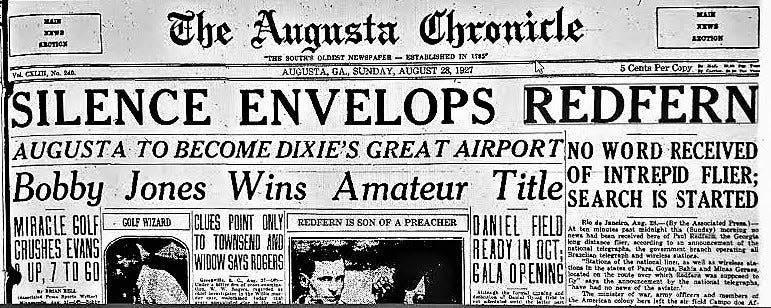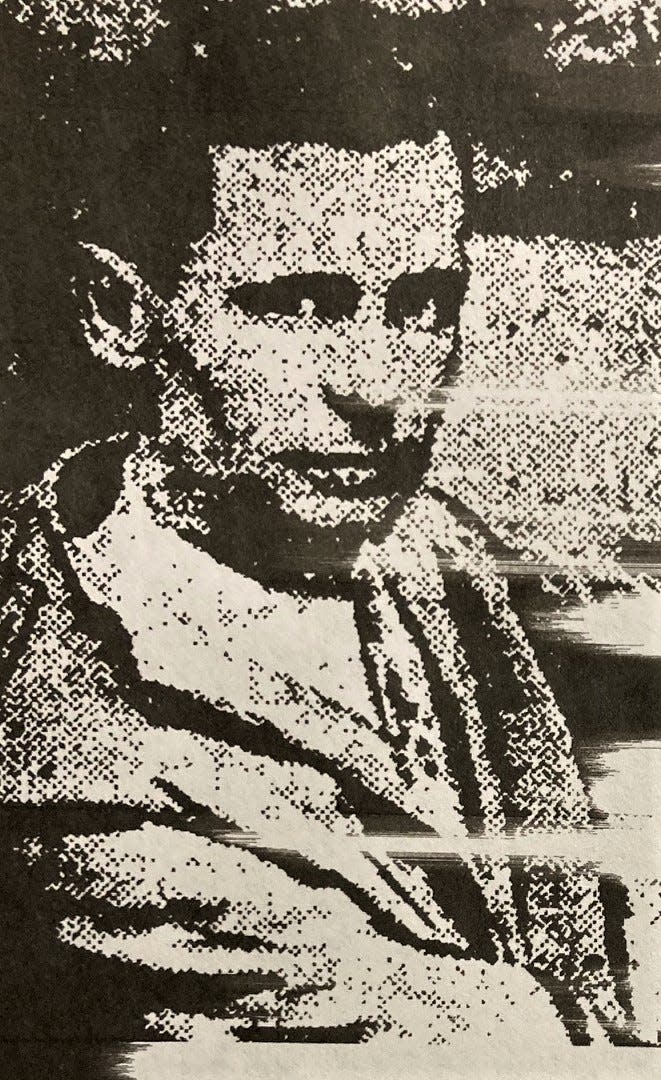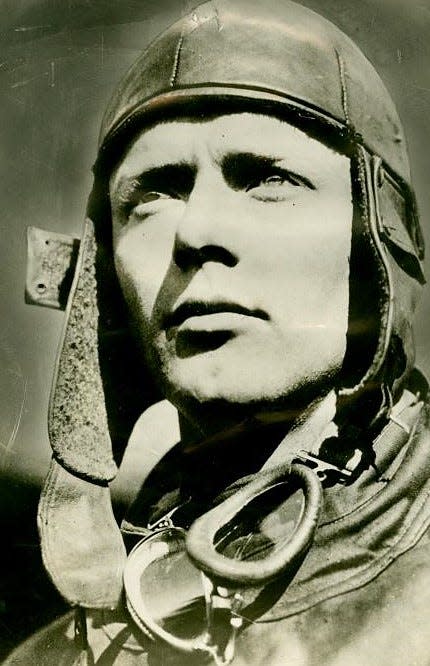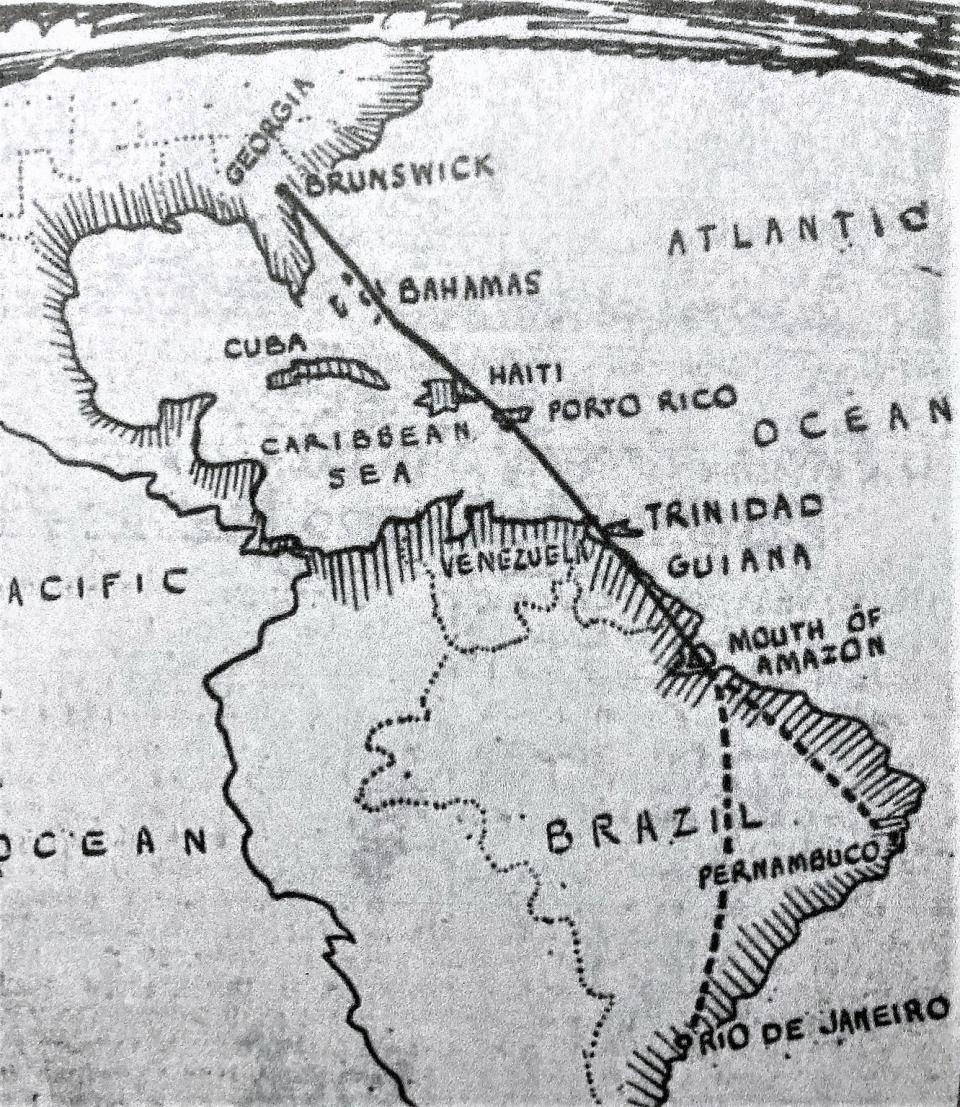Monday Mystery: Almost a century later the fate of regional aviator remains unknown
- Oops!Something went wrong.Please try again later.
- Oops!Something went wrong.Please try again later.

Correction: An earlier version of this story gave an incorrect year for aviator Amelia Earhart's disappearance over the Pacific Ocean. It was 1937.The story has been updated.
It was a big story in 1927 and almost a century later we still don't know the fate of aviator Paul Rinaldo Redfern – whose legend has become part Charles Lindbergh and, unfortunately, part Amelia Earhart.
In July 1927, Redfern, 25, left Sea Island on the Georgia coast in a Stinson SM-1 Detroiter aircraft on a two-day flight that would have made aviation history. It would have been the first flight from the United States to South America – a 4,600-mile trip to Rio de Janeiro. By comparison Lindbergh's New York-to-Paris flight two months before was 3,622 miles.

Rio was ready for him, too. The country's president and Hollywood star Clara Bow had a grand welcoming party planned.
Redfern's task was not an easy one.
The flight was to take 52 hours, flying mostly at 5,000 feet and at 85 mph.
He had just a compass and a map and no radio.
Redfern couldn't look out his front window. He had to use a small periscope poking out the front of the fuselage.
It was also hurricane season and there was no moonlight after dark.
Why make such making such a dangerous trip?
Partly because it was a time in America when such efforts earned fame, glory and even money. Lindbergh's New York-to-Paris flight in May 1927 was to win a $25,000 prize offered by a New York hotel magnate.

Redfern's effort was backed by the Brunswick Board of Trade, seeking to attract business to the coastal Georgia port, and he thought he was the man for the job.
The son of a pastor, he had grown up in Columbia, S.C., and focused on flight as a teen. He built his own glider out of cardboard and later flew planes, performing stunts at fairs. He was once arrested in Texas for flying too close to a moving train, but he also assisted law enforcement helping agents find moonshine stills from above.
All that led to a summer morning in 1927 when Redfern kissed his wife, Gertrude, hopped in his plane and flew south. As soon as he was out of sight, they say Gertrude collapsed in dread. She never saw him again.
For decades, they would search. His flight was supposed to carry him over the Caribbean Sea, Venezuela, then the vast stretch of the Amazon jungle before arriving in Rio de Janeiro, then Brazil's capital.
Over the years there were 13 known expeditions into South American jungles looking for clues, costing hundreds of thousands of dollars, all unsuccessful, but almost all generating news stories retelling the Redfern mystery.

His family said there were many theories about what happened.
Maybe he crashed in the jungle, died and the wreckage never found.
Maybe he crashed into the jungle and was killed by natives.
An oft-repeated story – in this era of "Tarzan" movies – had Redfern surviving a crash, then becoming a sort of "Lord of the Jungle"/medicine man who wielded power and influence.
"Who can say what happened?" a cousin told the Associated Press in the 1980s. "I don't imagine we'll ever know for sure."
There were two accounts of what might have been the final sighting of Redfern's aircraft. An American engineer said he saw a plane with Redfern's tail number over Venezuela "trailing a thin wisp of smoke." The same day a Norwegian ship off the South American coast near Trinidad reported it saw Redfern, as well.
Dexter Martin, a South Carolina aviation historian who studied Redfern's flight and flew over South America's jungles, said he thought the young pilot just got lost and ran out of fuel.
Redfern's father died in 1941, never losing hope his son would be found.
Redfern's wife, Gertrude, who last saw her husband on a Georgia beach, lived until 1981 when her newspaper obituaries referred to her as an aviator's widow.

Today, Lindbergh remains an American icon. Amelia Earhart is remembered as America's first great woman pilot before her own mysterious disappearance while crossing the Pacific in 1937.
And Paul R. Redfern is remembered with his name on a small shopping center on Georgia's St. Simons Island, a few streets and a plaque at his old Columbia, S.C., high school.
Bill Kirby has reported, photographed and commented on life in Augusta and Georgia for 45 years.
This article originally appeared on Augusta Chronicle: Pilot left Georgia for Rio and fame, but vanished | Monday Mystery

